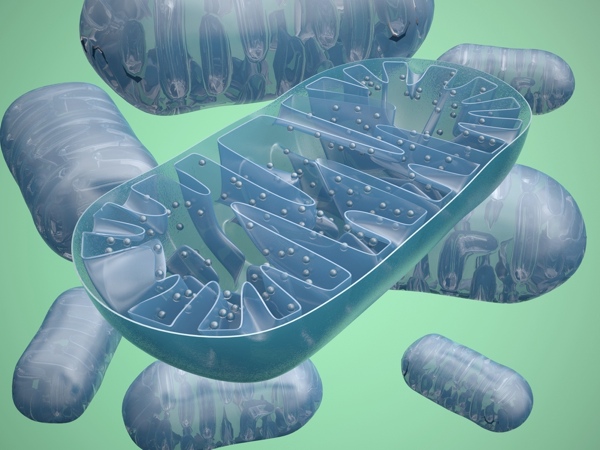
2CARE study of coenzyme Q for Huntington's disease ends in disappointment
The largest ever HD drug trial, testing coenzyme Q10, is halted for 'futility'. What does that mean for HD research?

The largest ever therapeutic trial for Huntington’s disease was halted early this week because an analysis of the results to date showed that it was very unlikely to show positive results. The study, called 2CARE, was designed to test whether a treatment called coenzyme Q10 could slow the progression of HD.
Early trials with CoQ10 in HD
Coenzyme Q10, or CoQ10, is a naturally occurring substance, found in all the cells of our body. It is used by our cells as an important part of the process that turns our food into chemical energy. CoQ10 acts to shuttle high-energy particles through the process of energy creation.

When scientists look at the brains of people with Huntington’s disease, they observe reduced levels of energy, almost as if the power plants aren’t working at full capacity. This suggested that, perhaps, bolstering energy production could be a useful treatment for HD. Work in the mid-1990s provided some evidence that giving HD patients CoQ10 pills helped rev up their cellular power plants.
In 1996, physicians led by Dr. Ira Shoulson published a small study of CoQ10 in human HD patients. They observed that the drug was well tolerated, but that it didn’t have any beneficial effects at the dose and duration tested — 600 or 1,200 mg a day for six months.
The results of a bigger trial of CoQ10 in HD were reported by the Huntington Study Group in 2001. This study, called the CARE study, treated a larger number of patients (347) for a longer time period (almost 3 years). Again, the researchers found that the compound was well tolerated, but that it had no robust benefits in terms of HD symptoms.
During this era, researchers also began reporting that high doses of CoQ10 made some HD mouse models better. This poses a bit of a conundrum: why would the compound make HD mice better, but not HD patients?
Just not enough?
There are a few possible explanations for why the results with CoQ10 failed to translate from mouse to human studies. The simplest explanation is that CoQ10 simply doesn’t work. Another possible explanation is that it might have beneficial effects in HD, but too low a dose had been tested.
“It seems clear now that coenzyme Q10 does not work for HD.”
A large Parkinson’s disease study, published in 2002, suggested that very large doses of CoQ10 (as high as 1,200 mg per day) were tolerated by patients with this disease. Maybe the human HD patients given CoQ10 just weren’t given enough of the compound?
Researchers took this question back to the lab and tried increasingly large doses of CoQ10 in HD mice. Those mice that received the largest doses of CoQ10 seemed to do the best. In a small human study, published in 2010, researchers observed that human HD patients were able to take up to 3,600 mg a day of CoQ10 without important negative effects.
So, now we know that HD patients can take very large doses of CoQ10 and that, at least in mice, these large doses are the most beneficial ones. Motivated by this information, researchers at the Huntington Study Group designed the largest ever study in HD patients — intended to enroll 609 volunteers – called 2CARE. This study would use a very large dose of CoQ10 (2,400 mg a day), and treat volunteers for a whopping 5 years.
2CARE began in 2008 and was due to finish in late 2017.
2CARE halted
The Huntington Study Group posted an announcement on their website this week announcing that the 2CARE study was “stopped for futility”. What does this mean, in the context of a drug trial?

Any drug trial consumes important resources. Clinical trials cost big money because of the staff and resources involved. Perhaps more importantly, Huntington’s disease families put their time, effort and hope into a process that can be time-consuming and sometimes stressful for them.
Agencies that run big trials like 2CARE have come up with ways of monitoring the progress of the trial. Regular ‘interim analyses’ are run throughout the trial — kind of like a pitstop for a racing car. These are important for a couple of reasons. At the top of everyone’s list is safety. If people taking the drug are having some kind of health complication, we need to know right away so we can halt the trial.
In regard to safety, the press release by the Huntington Study Group noted that there were slightly more deaths in the 2CARE study among HD patients taking CoQ10 (7% of the people in the CoQ10 group) compared to those patients taking inactive placebo pills (4% of the people in the placebo group). They pointed out that the differences between the groups (7% vs. 4%) could have happened by chance, and may not have been due to the drug treatment.
The other aspect of a trial that can be monitored is called ‘futility’. Futility means pointlessness, and in the context of a clinical trial, futility means that an interim analysis shows that the results are so unlikely to be positive that there’s no point in finishing the trial.
In the case of the 2CARE study, an early look at the progress suggested that there was less than a 5% chance that the trial would turn up a positive result in the end, given how things were going. With such a low chance of succeeding, coupled with the concern that high doses of CoQ10 could be dangerous, the trial was stopped early.
Post-mortem
“HD families need to remember that these failures are disappointing individually, but collectively they are the only way we can find a treatment that works. ”
It’s important to ask at times like this, what can we learn from the failure of CoQ10 in HD?
First, many HD patients and family members have been taking CoQ10 for years, because of early hints that it might be beneficial. It seems clear now that coenzyme Q10 does not work for HD.
Second, we can now divert the resources that were going to be used for the 2CARE study to other studies with a better chance of working. The enrollment of more than 600 patients for 5 years was a large achievement by the HD community, and we hope the commitment it represents will be repeated in future trials with a better chance of success.
In fact, it’s likely that the next year or two will see the launch of several trials targeting specific mechanisms underlying HD, rather than ‘generally beneficial’ compounds like CoQ10. The patients now released from participation in 2CARE may be the ones who help get these new trials up and running as quickly as possible.
Finally, it’s worth considering as a community, which drugs we test in HD patients. Looking back, the body of evidence used to decide to test CoQ10 in human patients was fairly limited. In fact, recent efforts to repeat the observation that CoQ10 makes HD mice better have failed. The early halt to 2CARE is a good chance to pause and think about what evidence from the lab is compelling enough to risk testing future drugs in HD patients.
Now what?
After so much time and effort, this is a result that nobody wanted. But if the road to a cure for Huntington’s disease were a simple straight path, we’d already be at the end of it. We need to remember that these failures may be disappointing individually, but collectively they are the only way we can find a treatment that works. Even a negative trial result helps us understand more about HD and how to develop and test better drugs to fight it. Losing this battle is a disappointment, but we remain optimistic about the course of the war against HD.
Learn more
- Press release from the Huntington Study Group describing the early halting of the 2CARE trial
- A paper describing the results of the earlier "CARE" study of CoQ10 in HD patients (full article requires payment or subscription)
- The website of the 2CARE study at the Huntington Study Group
- A manuscript suggesting that CoQ10 is actually not beneficial in HD mice.
For more information about our disclosure policy see our FAQ…


